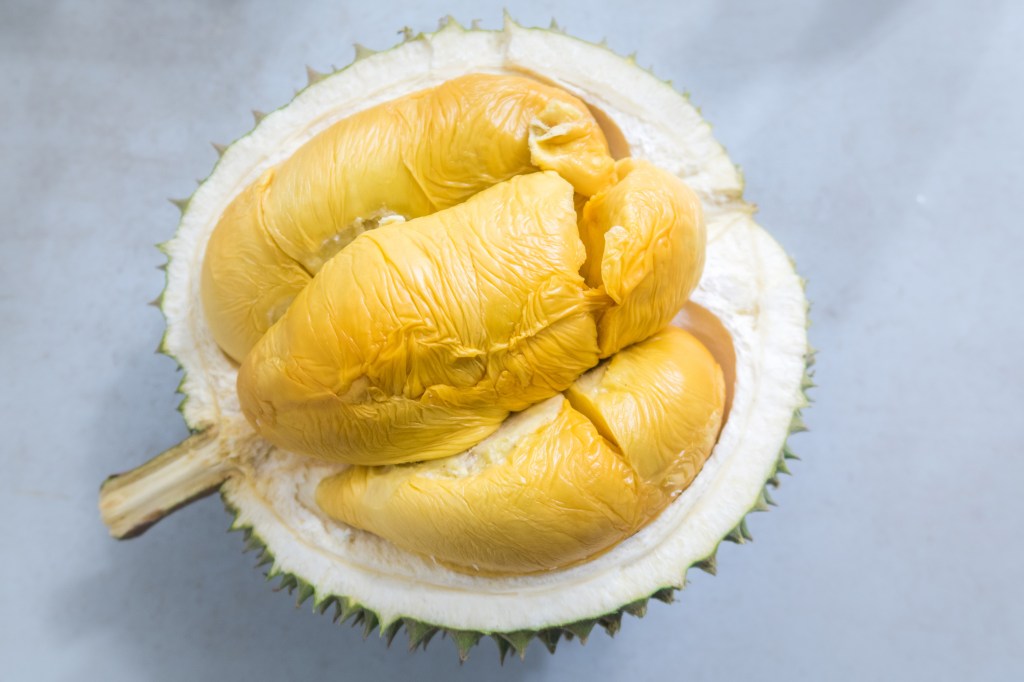There’s a lot you could do if you had a thousand dollars to burn. You could buy over 200 grande lattes at Starbucks—and even spring for up-charged nut milk. You could take yourself and a date out to eat at the Michelin-starred Alinea, for dinner and a decent wine pairing, and still have enough money left over to pick up some soft serve on the way home. You could almost buy an iPhone XS.
Or, if you happened to be in Indonesia, you could buy one single durian. Keep in mind: That thousand won’t cover airfare or accommodations to get you to Indonesia—literally just that one piece of fruit.
Videos by VICE
A new variety of durian called “J-Queen” is now available in Indonesia, the Guardian reported earlier today, but it’s so rare that a single piece of the stinky-ass fruit will run you 14 million Indonesian rupia. Converted, that’s about US $993, as of this writing. At least two of the fruits have already been purchased.
The variety fetches such a high price because, according to the Indonesian blog Coconuts Jakarta, there’s currently only one J-Queen tree, and it produces fruit just once every three years. Compared to the standard durian, the J-Queen’s fruit is both rounder and more yellow in appearance. It reportedly tastes like “peanuts and butter” and has earned awards in durian competitions around Southeast Asia.
The J-Queen, while expensive, is presumably still pungent like a normal durian, which could limit what you can do with it once you’ve splurged. In some places, public durian-eating is banned because of its smell, and in November, durian stank up an airplane’s cargo hold so badly that it forced flight delays while the crew unloaded it.
The J-Queen’s price has earned a lot of attention online and in real life. Coconuts Jakarta called it a “viral sensation,” and reported that people are lining up at the only shopping center where it’s sold to take a selfie with the prickly produce. (Personally, the fear of dropping and ruining a $1,000 fruit would keep me from any social media stunting, but you do you.)
Not all of that attention has been good, however. The Guardian pointed out that the price of a single J-Queen is over three times more than the average monthly income of a person in Indonesia.
The hybrid’s inventor told Indonesian news website Tribunnews that the J-Queen is intended to “improve the welfare of farmers.” But right now it’s only benefiting him, since he specifically told CNN that he hasn’t shared the seeds with other producers. Beyond that, not only are Indonesian durian farmers largely unfamiliar with the J-Queen, the Guardian wrote, but it costs about 70 times more than even the other rare varieties that they currently grow.
It might sound over-the-top to spend a thousand dollars on a durian, but that’s nothing compared to previous specialty fruit sales. Last year, in Thailand, a durian of the Kan Yao variety sold for 800,000 baht, or over US $25,000. And a pair of special melons in Japan raked in over $27,000 when sold in 2016.
All of which makes me feel less guilty about splurging on Honeycrisp apples over the cheaper, but slightly less good Fuji.




